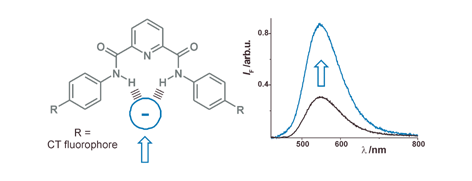A charge transfer-type fluorescent molecular sensor that “lights up” in the visible upon hydrogen bond-assisted complexation of anions†
Abstract
A charge transfer-type fluorescent molecular sensor consisting of a bisamidopyridine receptor and two styryl base


 Please wait while we load your content...
Please wait while we load your content...